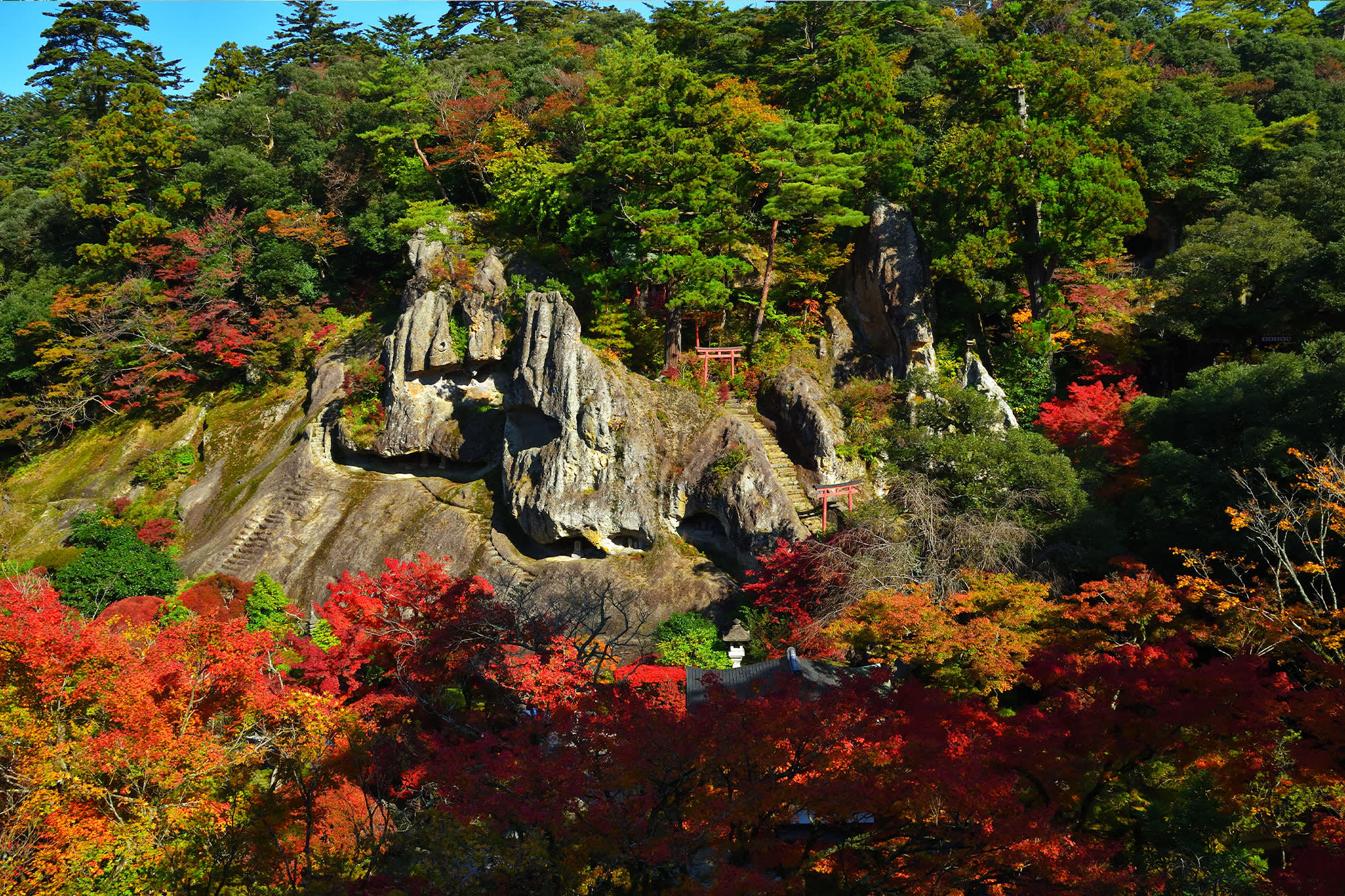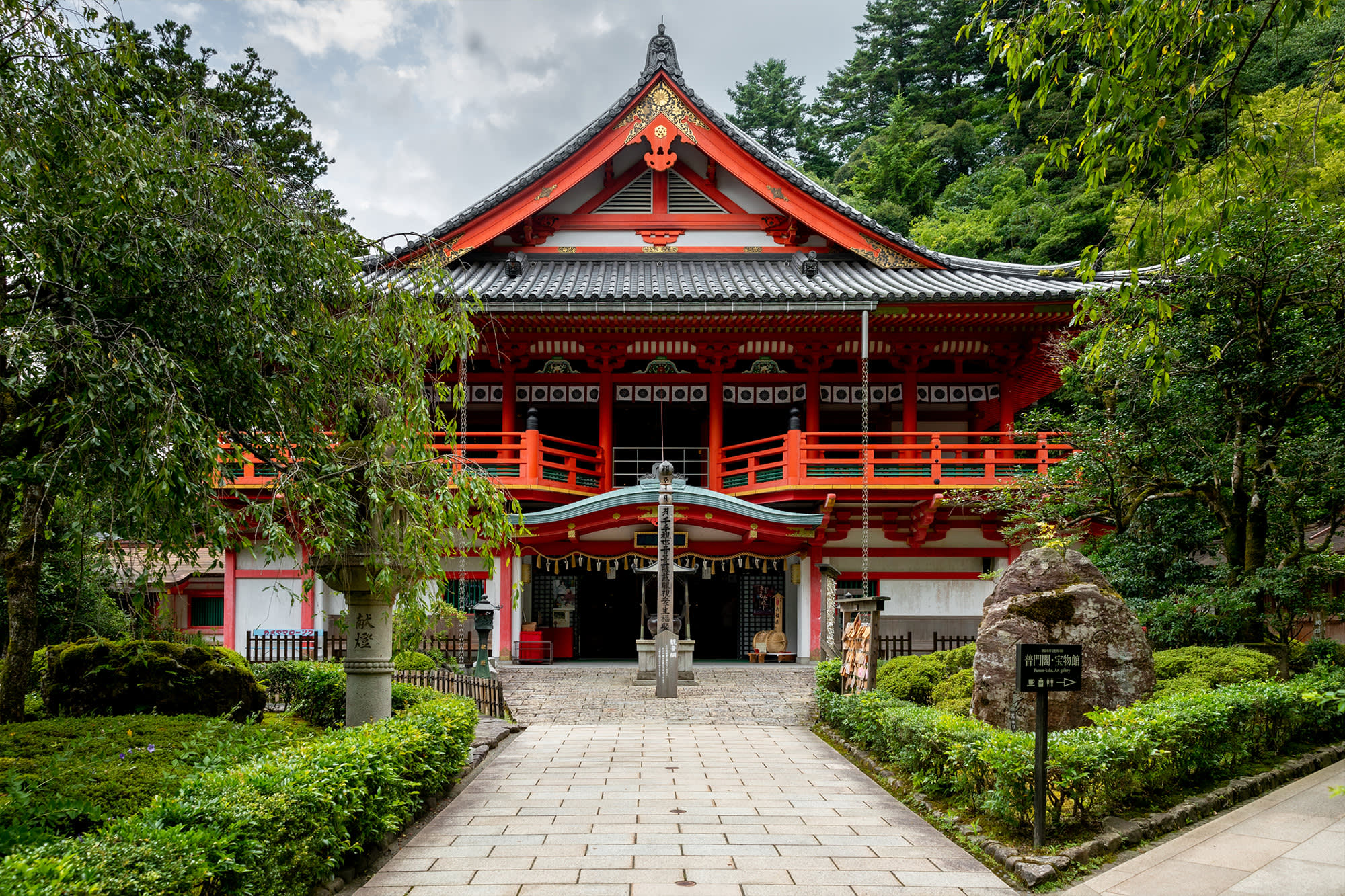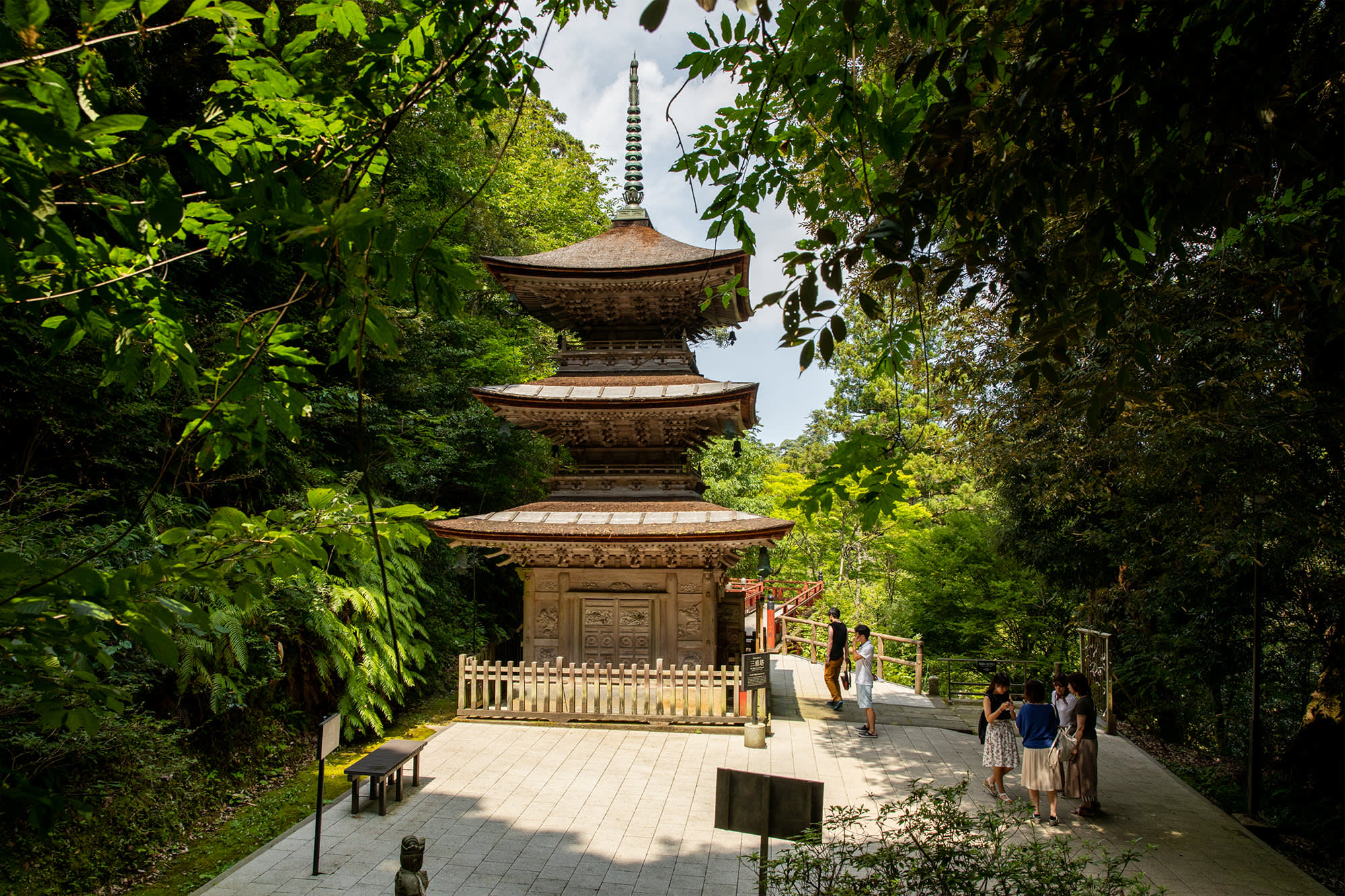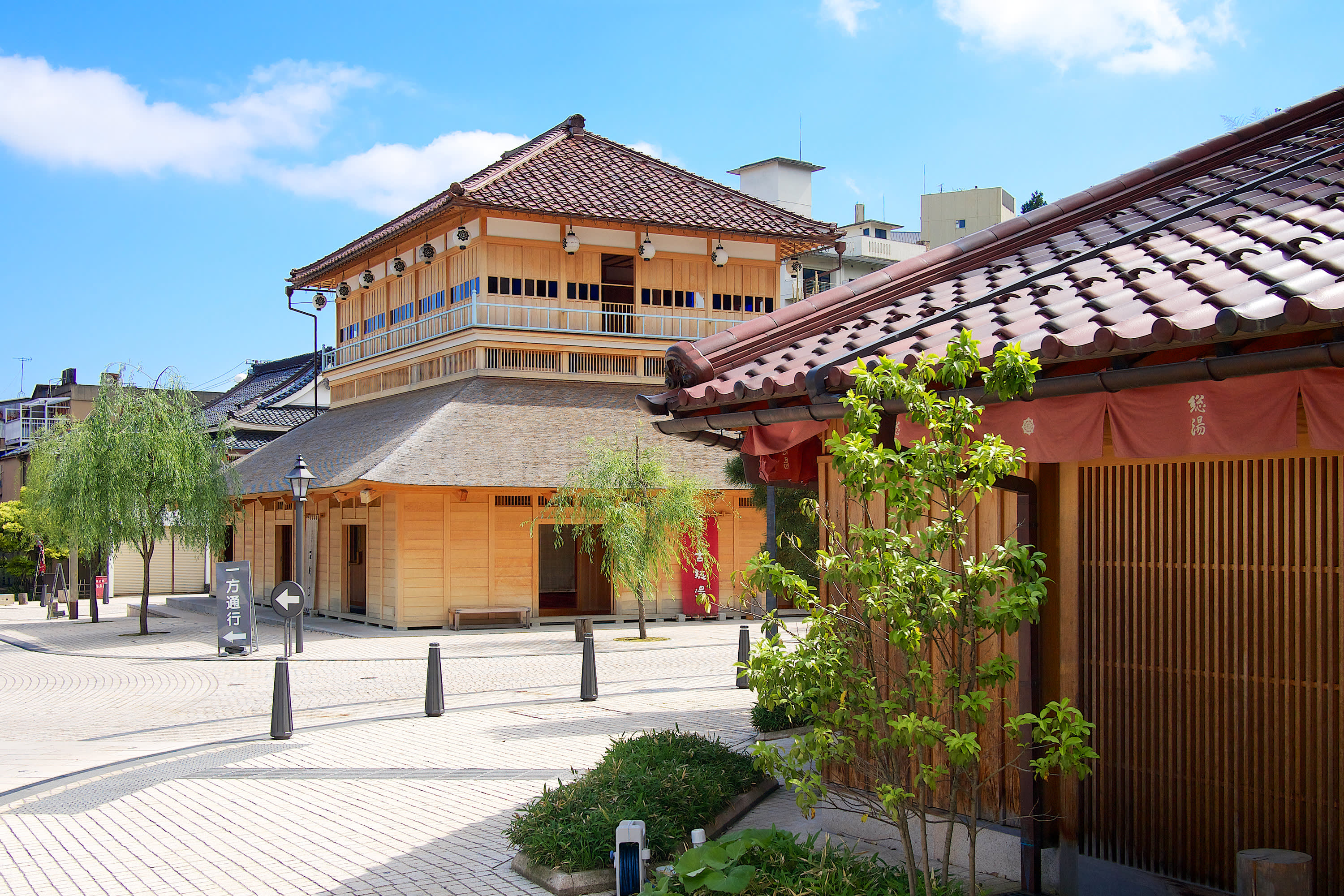Natadera Temple 那谷寺
Dramatic cliffs tower over unique temple buildings and serene gardens
The natural rock formations at Natadera Temple have been revered as a sacred place for well over 2,000 years. The cliffs and caves were shaped by volcanic eruptions and eroded by ocean currents. They tower above the temple’s mossy forests, traditional-style gardens, and carp-filled ponds, earning Natadera a star in the Michelin Green Guide.
Natadera’s caves were thought of as sites of reincarnation according to followers of the Hakusan faith, who worshipped deities living on Mt. Hakusan. The monk Taicho (682–767) climbed Mt. Hakusan in 717 seeking these deities. While meditating on the highest peak, he was visited by a manifestation of Kannon, the bodhisattva of mercy in the Buddhist pantheon. He was inspired to build Natadera Temple in honor of Kannon and began construction that same year.
Today, Natadera is a Buddhist temple enshrining Kannon. The temple continues to be an expression of Taicho’s belief in the harmony between nature and human life, with the temple built directly into the natural caves. Its incorporation of non-Buddhist architectural elements, including the torii gates usually found at shrines, marks the syncretic mix of Buddhism, Hakusan mountain worship, Shinto, and nature worship practiced at Natadera.
Natadera’s wooden halls and pagodas are intricately carved with Chinese zodiac animals, peonies, and chrysanthemums. The kondo main hall, used for most Buddhist services, houses a 7.8-meter-tall statue of Kannon surrounded by local Kutani porcelain tiles.
For a separate admission fee, you can visit the reception hall (shoin), built in 1637 by Lord Maeda Toshitsune (1594–1658), and its peaceful garden.
Basic Information
Natadera Temple
Address
122 Natamachi, KomatsuHours
9:15 to 16:00Closed days
Open dailyFees
1,000yen (300 yen for children under 12; free for infants)Website




